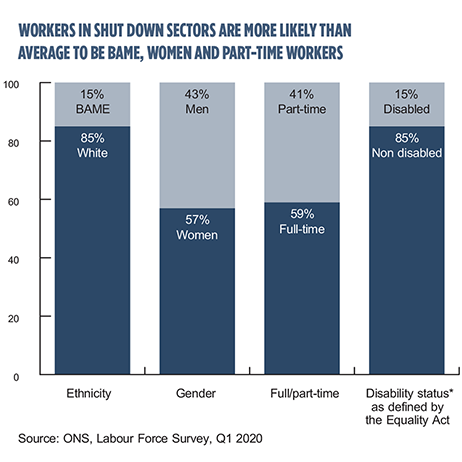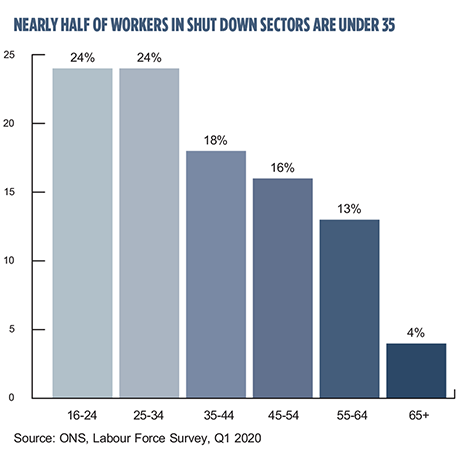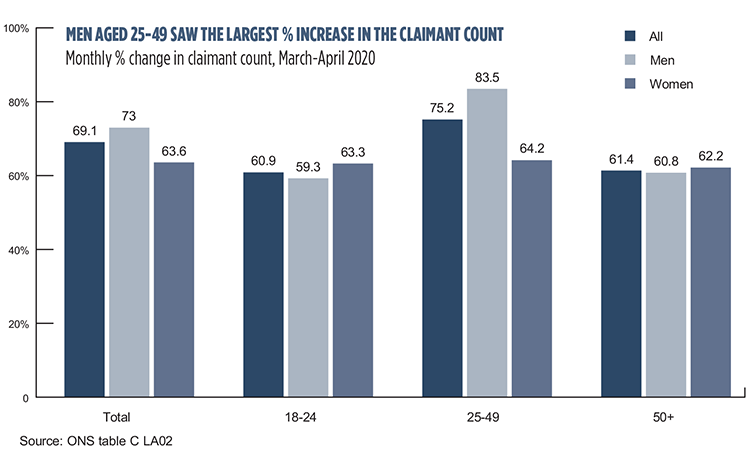Explained: Which workers have been worst hit by coronavirus?
4 min read
Everyone’s lives have been affected by Covid-19, but some much more so than others. The House of Commons Library explains the economic impact on different workers and demographics
The outbreak of the coronavirus has impacted groups of workers differently. For those who can no longer work or must work less because of the pandemic, there has been a significant economic effect. This Insight examines which workers have been most economically impacted, and breaks these groups down by ethnicity, gender, disability, working hours, and rates of pay.
Workers in shut down sectors
Workers in the sectors most affected by the pandemic are more likely than average to have been at a disadvantage in the labour market before the outbreak.
The Institute for Fiscal Studies (IFS) outlined a number of sectors which have shut down as a result of the coronavirus pandemic, such as retail, passenger transport, accommodation and food, and arts and leisure.
Our analysis of the Labour Force Survey shows that of the workers in the shut down sectors outlined by the IFS:
- 15% are from BAME (Black, Asian, Minority Ethnic) backgrounds, compared to a workforce average of 12%.
- 57% are women, compared to a workforce average of 48%.
- 41% are part-time workers, compared to a 26% workforce average.
- 15% are disabled (as defined by the Equality Act 2010), compared to a workforce average of 14%.
- Nearly 50% are under 35.
The charts below show the composition of the workforce of shut down sectors outlined by the IFS.


These groups of workers were at a disadvantage in the labour market before the coronavirus pandemic. According to Office for National Statistics figures:
- The BAME unemployment rate was 6.3% in January to March 2020 compared to 3.9% for the whole population
- The gender pay gap is 8.9% for full-time employees and 17.3% for all employees
- Gross median hourly pay for part time workers was £9.94, compared to £14.88 for full-time workers
- 53.2% of disabled people are employed, compared to 81.8% of non-disabled people
- The unemployment rate for 16-24 year olds was 11.9% January to March 2020, compared to a 3.9% rate for the total population.
This composition varies between shut down sectors. Some shut down sectors are especially reliant on the groups of workers discussed above.
- Over a quarter (27%) of the workers in the passenger transport sector are from a BAME background.
- 17% of the workers in the shut-down sections of the retail sector are disabled, and 57% are women.
- 34% of vulnerable jobs in the accommodation and food sector are done by 16 to 24-year-old workers and 16% of these workers are from a BAME background.
Shut down sectors have lower rates of pay
The Resolution Foundation estimates that the median weekly pay for a worker in a shut down sector is £348, compared to £479 a week for all workers in the UK. The IFS found that one third of employees in the bottom 10% of earners work in shut down sectors, compared to 5% in the top 10%.
Newly unemployed people
ONS data shows the number of people claiming unemployment-related benefits increased by 69% between March and April 2020.
The claimant count increased considerably for men and women across different age groups, shown in the chart below.

Some groups experienced a higher than average increase in claimants. People aged 25-49 experienced the largest increase, with 526,500 new claimants (75%). Men in this age group are particularly affected, with 333,000 extra claimants – an 84% increase.
Whose health is most at risk?
Key workers and those in occupations with the highest coronavirus-related deaths, are at a heightened health risk than other workers. These workers are more likely than average to be women and from a BAME background, as well as born outside the UK. We have looked at this in more detail in Coronavirus: Which workers are most at risk?
Brigid Francis-Devine is a House of Commons Library researcher specialising in labour markets, poverty and inequality.
